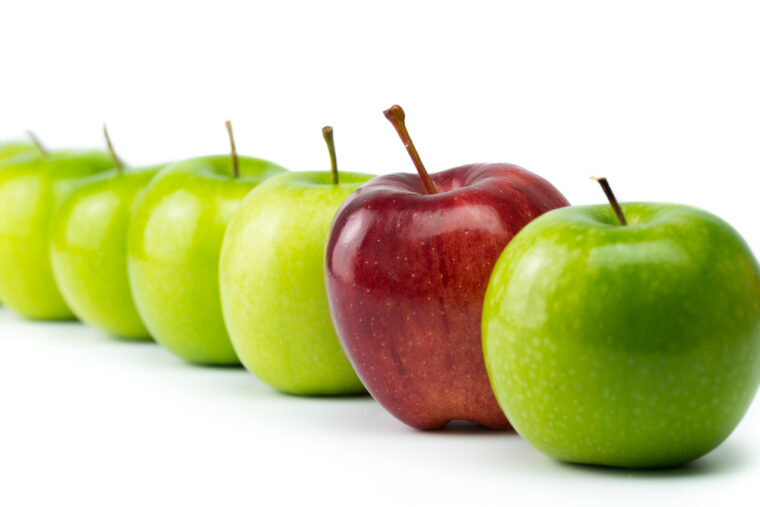
Comparing details about similar topics can be a helpful reading strategy. In addition to teaching this, though, we also need to teach students to notice when they need to ask comparison questions. Below is a description of a series of demonstration lessons I gave focused on this issue.
Phase One – Meet the Source
- Introduced the source (NEWSELA article “A Day in Space” Lexile 840) with a simple gist statement: We are going to read an article about the lives of astronauts on the International Space Station. (You could ask students to read this on-line for Phase One.) (I know this is the same source I used in the last blog post. Could you have kids read it again with this different purpose? Or use one of the additional sources listed below?) NOTE: This article is no longer available without a subscription to NEWSELA BUT the article was adapted from text at NASA.gov site. You could lift from there and do a similar lesson.
- Explored vocabulary “daily routine” with the following three steps:
- Kid-friendly definition (written on paper for all to see) – “tasks or chores that are done regularly (everyday)”
- Shared a personal connection – One of my daily routines is to make coffee when I get up.
- Asked partners to turn and share a daily routine; provided the stem “One of my daily routines is_____.”
-
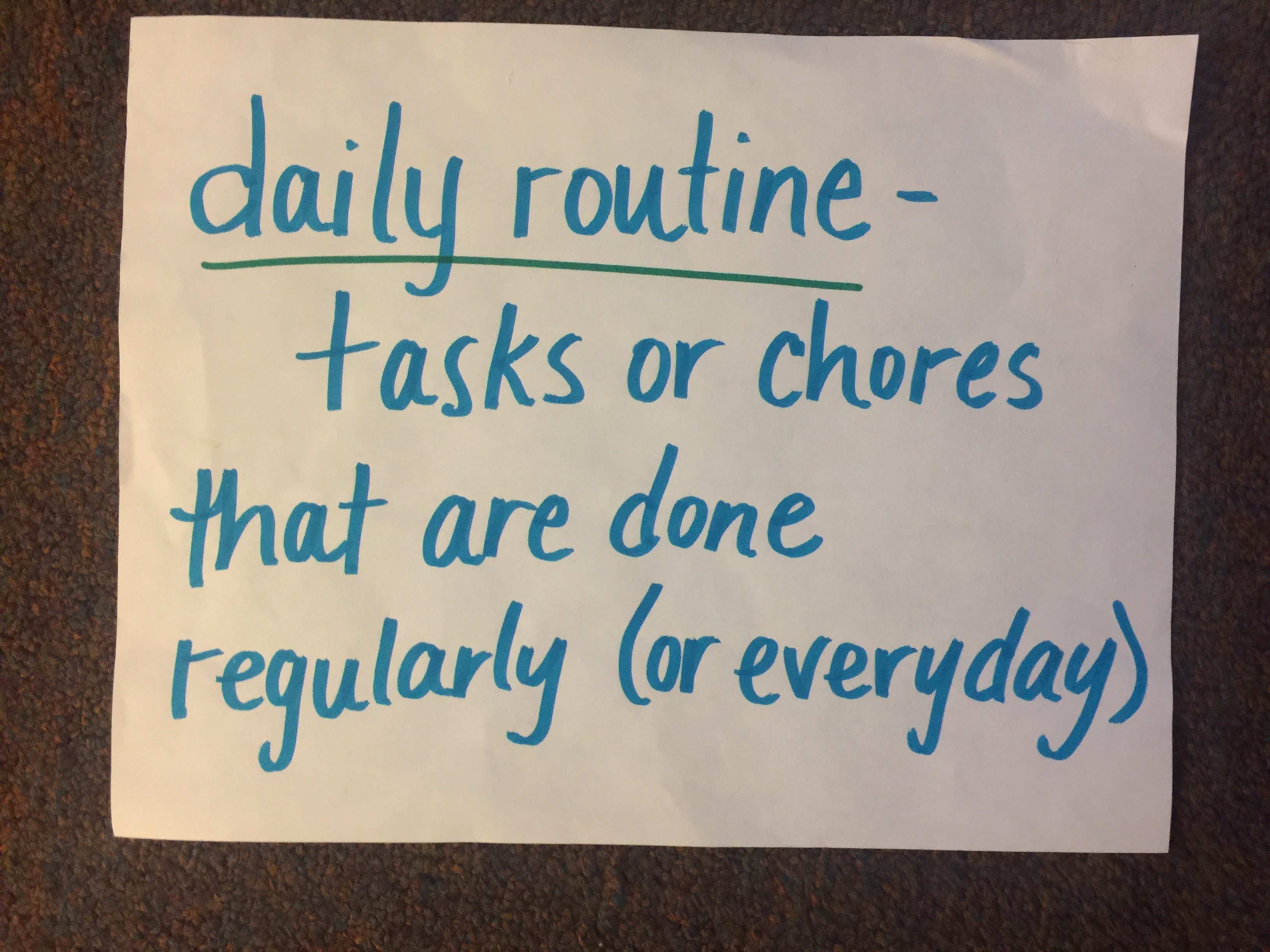
- Previewed & predicted – Asked questions like “What do you think you’ll be learning about the astronauts’ daily routines?” and “What do you notice (in the photographs, subheadings, etc.)?”
- STUDENTS READ AND I CONFERRED WITH INDIVIDUALS.
- Regrouped – After a teaching point, I posed this question for discussion – “What did you learn about the astronauts’ daily routines?”
Phase 2 – Meet the Strategy
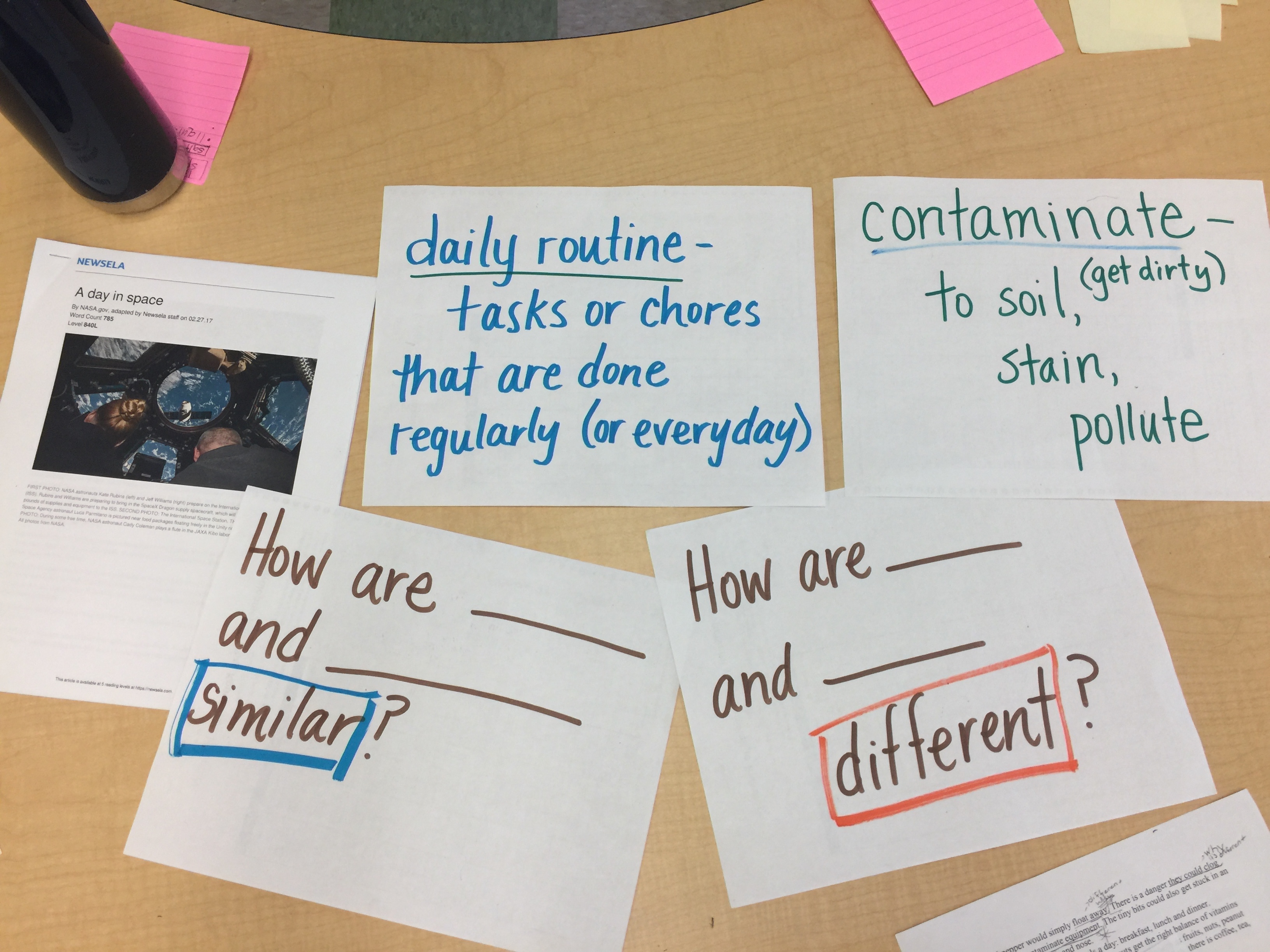
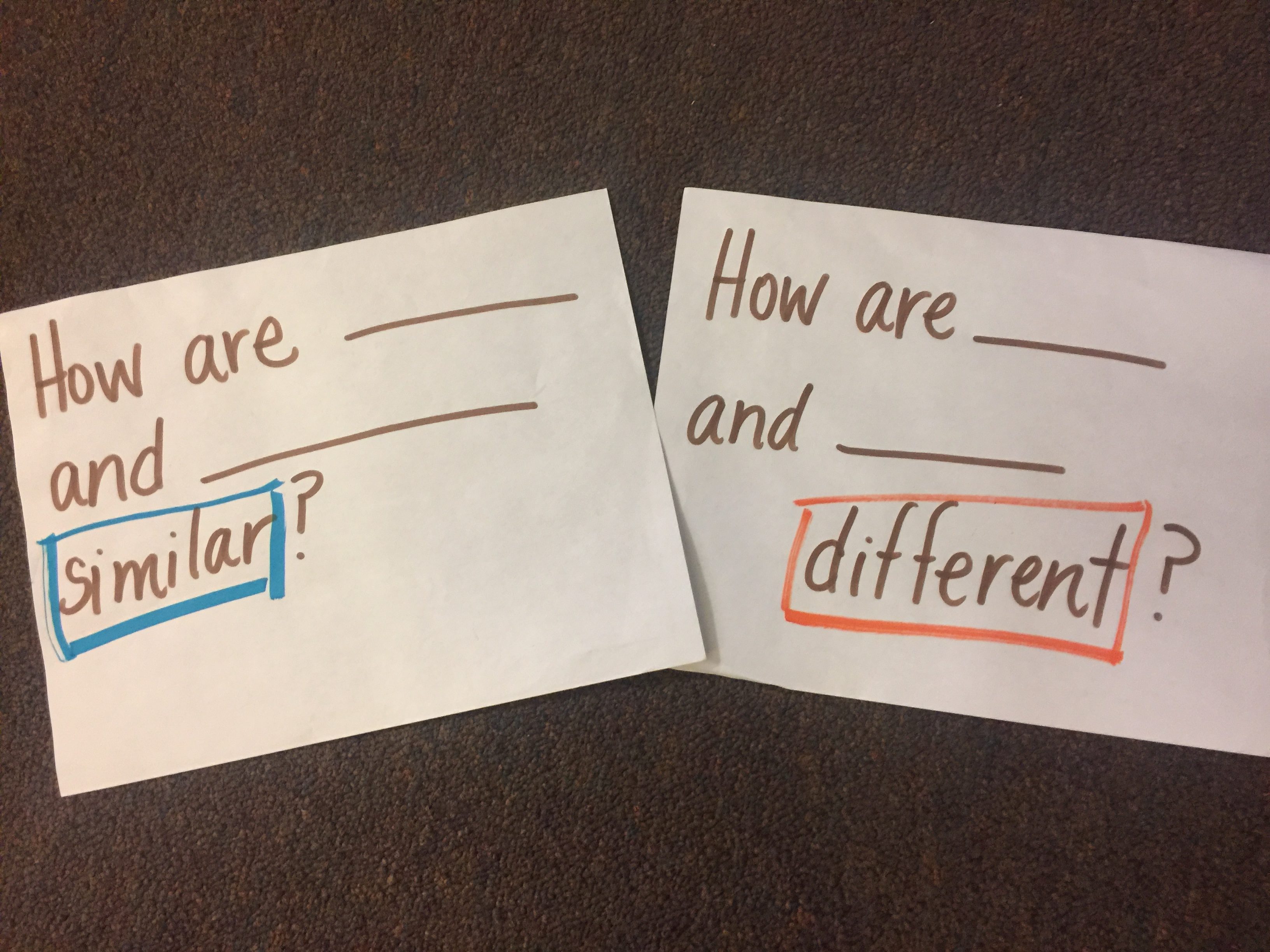
- Taught the word “contaminate” with three steps.
- Introduced the strategy – When I began to read this article the first time, I noticed right away that the author was comparing life on the International Space Station with life on Earth. Let’s look back at the first paragraph and I’ll show you where I started to think that. (Shared reading of first paragraph in article.) When the author wrote, “Astronauts who live on the ISS follow daily routines just like those of us on Earth,” I started thinking, “Oh, the author might be comparing these two things and that means I need to be asking important questions as I read like: How are ______ and ________similar?” and “How are _______ and _________ different?” Asking these two questions can help me determine what’s important in the source and help me remember what I read. Placed these two questions out for students to notice.
- Shared close reading – We engaged in reading the paragraph about the astronaut’s food that begins “Condiments like ketchup…” and goes on to explain how the astronauts’ salt and pepper is liquid and why. As we read each sentence, we underlined details that explained how this is the same or different and wrote annotations in the margines. (I cut and paste the article into a word document for the Phase Two lesson.) A Day in Space 2_22_18
- Guided close reading – Students read and annotated paragraph that begins “They also use a different type of toilet…” (I picked this paragraph because there are a couple of sentences that go into depth.)
- Independent close reading – Students read and annotated paragraph that begins “After a long day in space, nothing’s better than a good night’s sleep…” that explains how astronauts attach themselves to the wall to sleep.
- Closing (discuss content and strategy) – What did we learn about how astronauts’ daily routines are different than ours? How did keeping these two questions in mind help us as readers?
Phase 3 – Meet the Response
- Helped the students plan using their annotations. Below is an example of one student’s plan; her group ended up writing about all three sections they had close read. With a second group that needed more support, I wrote the key words they generated and they only wrote about that one section.
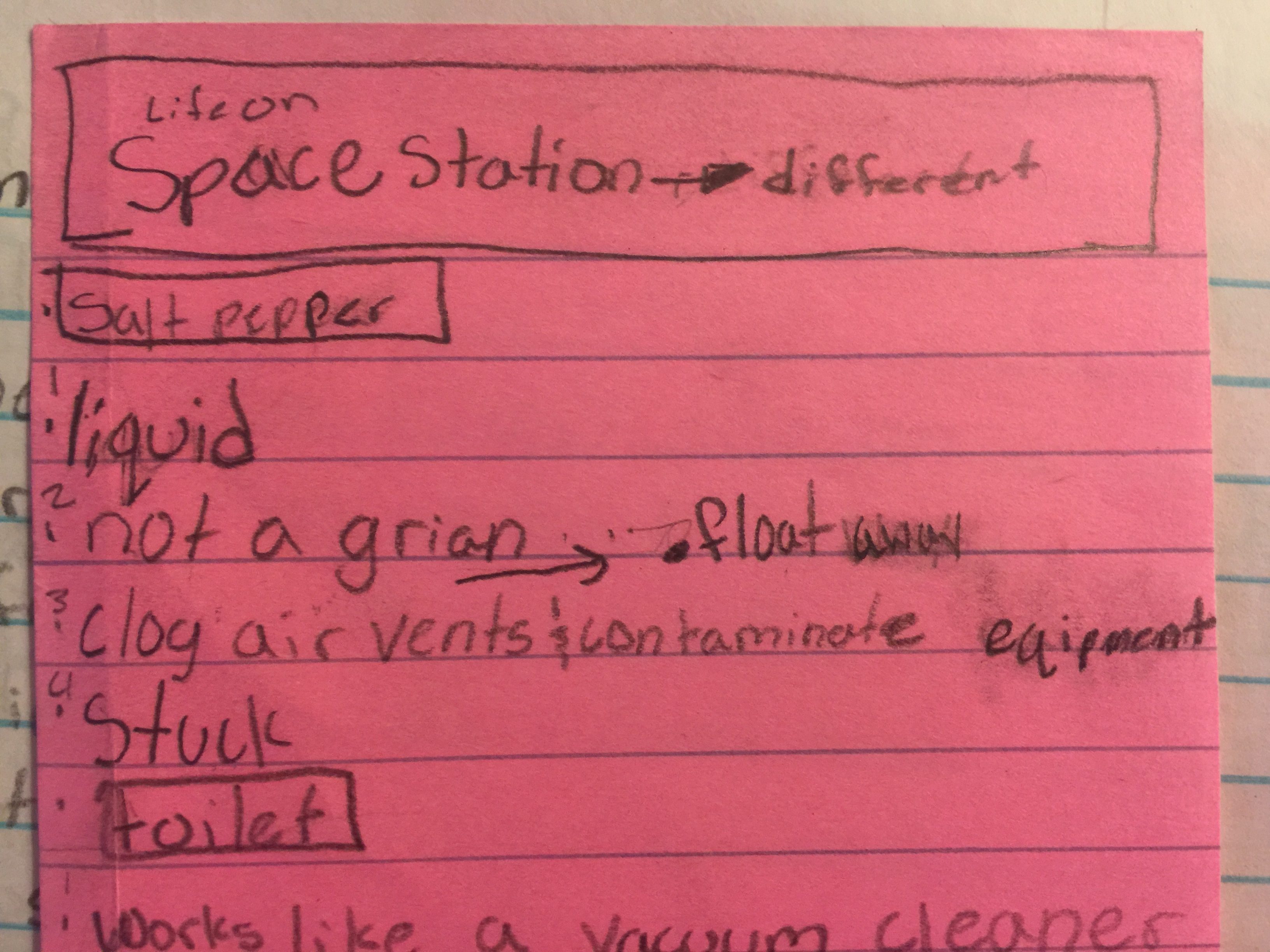
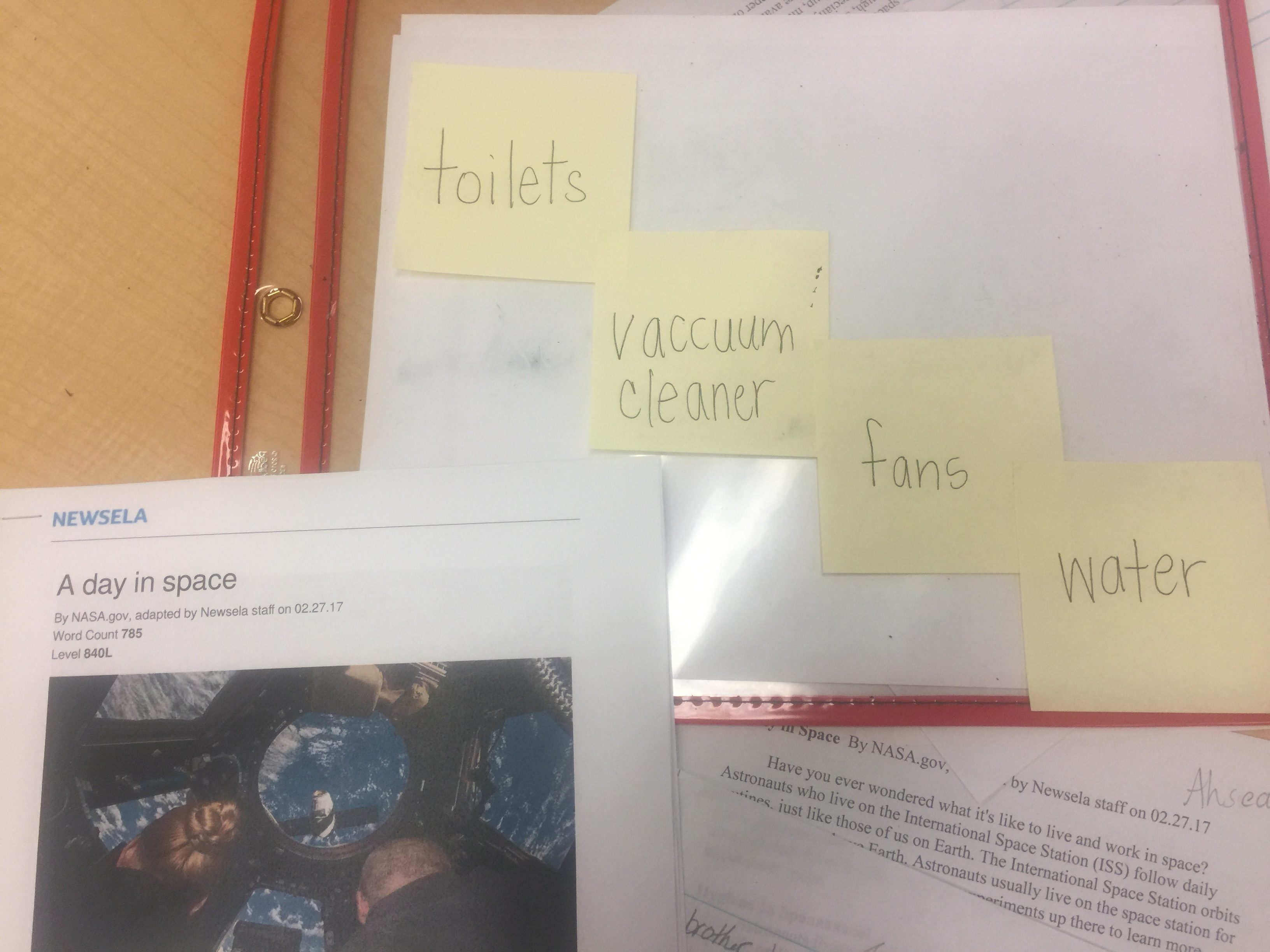
- Leaned in to confer while they wrote.
- Briefly shared to close.
Text for a follow up lesson – European Space Agency site about daily lives of astronauts
Hope this helps.
S
UPDATED JANUARY 2025
